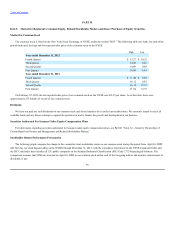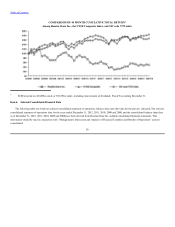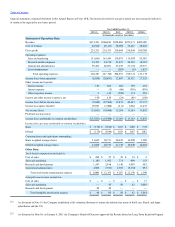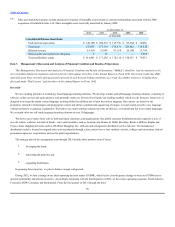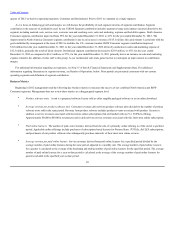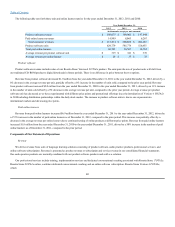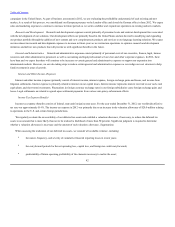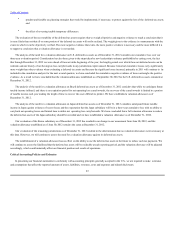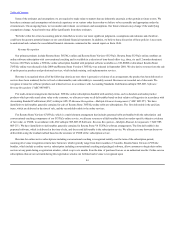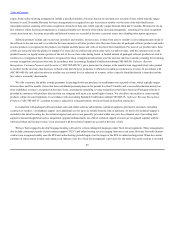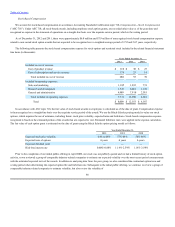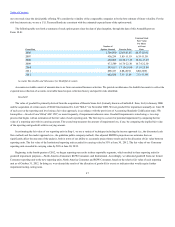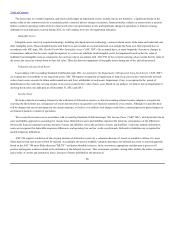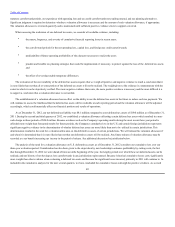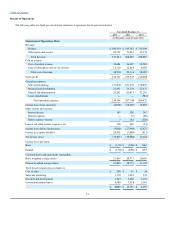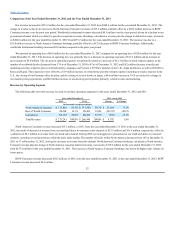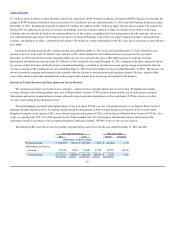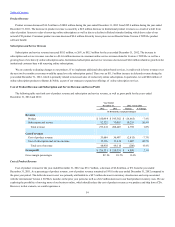Rosetta Stone 2012 Annual Report Download - page 47
Download and view the complete annual report
Please find page 47 of the 2012 Rosetta Stone annual report below. You can navigate through the pages in the report by either clicking on the pages listed below, or by using the keyword search tool below to find specific information within the annual report.
Table of Contents
Some of the estimates and assumptions we are required to make relate to matters that are inherently uncertain as they pertain to future events. We
base these estimates and assumptions on historical experience or on various other factors that we believe to be reasonable and appropriate under the
circumstances. On an ongoing basis, we reconsider and evaluate our estimates and assumptions. Our future estimates may change if the underlying
assumptions change. Actual results may differ significantly from these estimates.
We believe that the critical accounting policies listed below involve our more significant judgments, assumptions and estimates and, therefore,
could have the greatest potential impact on our consolidated financial statements. In addition, we believe that a discussion of these policies is necessary
to understand and evaluate the consolidated financial statements contained in this annual report on Form 10-K.
Our primary products include Rosetta Stone online and Rosetta Stone Version 4 . Rosetta Stone online combines an
online software subscription with conversational coaching and is available in a selection of time-based offers (e.g. three, six and 12 months durations).
Version 4 includes a online subscription bundled with perpetual software available as a CD-ROM or download. Rosetta Stone
online was released in July 2009 and Rosetta Stone Version 4 was released in September 2010. We also derive revenue from the sale
of audio practice products and professional services, which include training and implementation services.
Revenue is recognized when all of the following criteria are met: there is persuasive evidence of an arrangement; the product has been delivered or
services have been rendered; the fee is fixed or determinable; and collectability is reasonably assured. Revenues are recorded net of discounts. We
recognize revenue for software products and related services in accordance with Accounting Standards Codification subtopic 985-605,
("ASC 985-605").
For multi-element arrangements that include online subscriptions bundled with auxiliary items, such as headsets and audio practice
products which provide stand-alone value to the customer, we allocate revenue to all deliverables based on their relative selling prices in accordance with
Accounting Standard Codification (ASC) subtopic 605-25—— ("ASC 605-25"). We have
identified two deliverables generally contained in sales of Rosetta Stone online software subscriptions. The first deliverable is the auxiliary
items, which are delivered at the time of sale, and the second deliverable is the online services.
For Rosetta Stone Version 4 , which is a multi-element arrangement that includes perpetual software bundled with the subscription and
conversational coaching components of our online service, we allocate revenue to all deliverables based on vendor-specific objective evidence
of fair value, or VSOE, in accordance with ASC subtopic 985-605-25 Software: — ("ASC 985-
605-25"). We have identified two deliverables generally contained in Rosetta Stone V4 software arrangements. The first deliverable is the
perpetual software, which is delivered at the time of sale, and the second deliverable is the subscription service. We allocate revenue between these two
deliverables using the residual method based on the existence of VSOE of the subscription service.
Revenue for online service subscriptions including conversational coaching is recognized ratably over the term of the subscription period,
assuming all revenue recognition criteria have been met, which typically range from three months to 15 months. Rosetta Stone Version 4
bundles, which include an online service subscription including conversational coaching and packaged software, allow customers to begin their online
services at any point during a registration window, which is up to six months from the date of purchase from us or an authorized reseller. Online service
subscriptions that are not activated during this registration window are forfeited and revenue is recognized upon
44


